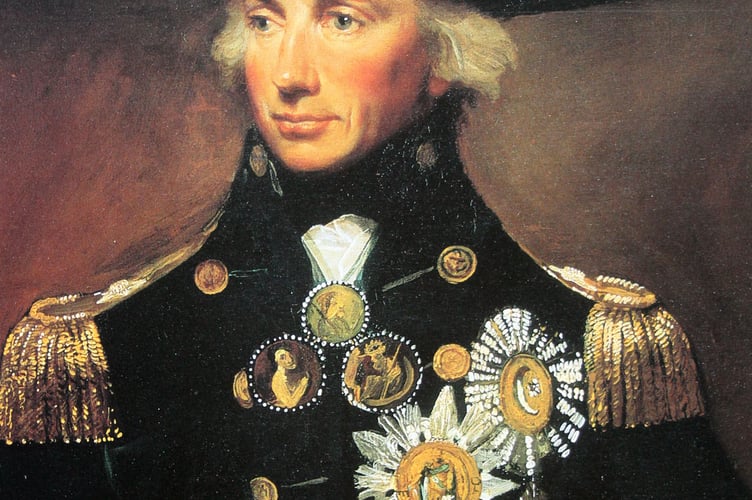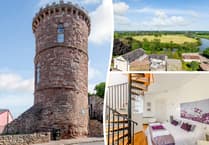THE Ross-on-Wye and Monmouth Sea Cadets and Marine Cadets will be celebrating their connection with Vice Admiral Lord Nelson on National Trafalgar Day this Sunday.
Nelson visited the Wye Valley and Forest of Dean with Lord and Lady Hamilton in 1802, three years before the battle, where he died on board the Victory.
He recruited 17 sea cadet trainees for HMS Agamemnon in 1793 and made a significant donation in 1802.
The Sea Cadets movement has honoured Nelson and the Royal Navy since the first National Trafalgar Day (October 21) in 1895.
The Severn District’s parade and celebration takes place in Monmouth two days earlier on Sunday (October 19) organised by the local unit, with some 130 cadets and instructors expected.
The parade starts in Blestium Street at 11.30am and will continue over Monnow Bridge, along Monnow Street to Agincourt Square, with the event continuing until 12.45pm.
Monmouth boasts the Nelson Collection of historical artefacts - bequeathed to the town by Lady Llangattock – which is part of the currently closed town museum awaiting its relocation to the Shire Hall.
Nelson visited the Wye Valley in August 1802, during which he inspected timber supplies from the Forest of Dean for the British Navy.
He launched down the Wye by boat from Ross-on-Wye and stayed in Monmouth and visited the town’s Kymin Roundhouse and newly-built (1800) Naval Temple, the gardens off Chippenham now open to the public as the Nelson Gardens, and stayed at the Beaufort Inn, where he danced with Lady Hamilton, before heading on to Chepstow, where he reputedly stayed at the Three Cranes pub.
While staying in Chepstow, he penned a hard-hitting handwritten report, held by Monmouth’s Nelson Museum, slamming the production of timber in the Forest and demanding that an “intelligent, honest man” was appointed the Navy’s woodland guardian to put a stop to “shameful abuses”.

The British naval hero, who died on board HMS Victory at the Battle of Trafalgar three years later, called for the planting of thousands of acorns to produce more oak trees, which were being burnt at a huge rate to fuel the Industrial Revolution.
In his scathing 11-page report, written with his left hand after losing his right at the Battle of Santa Cruz de Tenerife in 1797, he stormed: “The state of the forest at this moment is deplorable
“If my information is true there is not 3,500 load of timber in the whole forest fit for building and none coming forward.
“Nothing in it can grow self-sown, for the deer bark all the young trees,” he added. “Vast droves of hogs are allowed to go into the woods in the autumn, and if any fortunate acorn escapes their search, and takes root, then flocks of sheep are allowed to go into the Forest, and they bite off the tender shoot.”
Three years after his death, in 1808, Parliament ordered a mass planting of hundreds of thousands of oak trees across the Forest, which became known as ’Nelson’s Oaks’.
Fittingly some were used to restore the Victory in a major restoration project in 2005, 200 years after his death.





Comments
This article has no comments yet. Be the first to leave a comment.